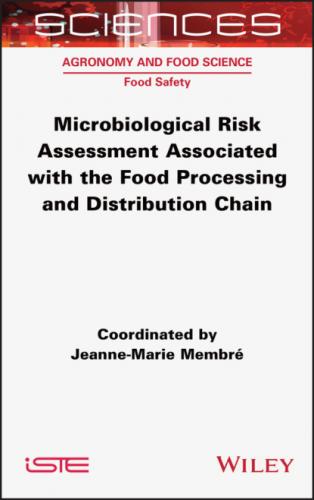Figure.1.1. Structuring of information essential to hazard identification. Created with BioRender.com
1.2. Who conducts hazard identification?
Hazard identification is the first stage in risk assessment. It is therefore often carried out by health agencies such as the European Food Safety Authority (EFSA) in Europe or ANSES in France when these agencies are seeking to clarify an action or a decision relating to food safety.
However, hazard identification is also implemented by companies, or more precisely by companies’ quality departments, when they are setting up their Hazard Analysis Critical Control Point (HACCP) systems. The HACCP system is a methodology that identifies, assesses and helps control hazards that have significance for food safety (Membré 2014). The HACCP system is a preventive operation, specific to a manufacturing unit, which begins with the purchase of raw materials, ingredients and packaging materials, follows the entire production process and ends at the finished product, ready for consumption. The HACCP system is based on seven principles, the first being “carry out a hazard analysis”. This first principle includes hazard identification. Conducting this identification should be assigned to a highly qualified team with proven skills in food microbiology.
1.3. Sources of useful information for hazard identification
The WHO and the FAO have listed the various types of data that can be used in hazard identification (FAO and WHO 2020), along with their benefits and drawbacks. Their main conclusions are summed up in Table 1.1.
The data cited by the WHO and FAO can be categorized according to their origin (whether they have been obtained from the scientific literature or from surveillance) and nature (epidemiological studies, prevalence and concentrations, early warning, toxi-infection, public health).
Food safety agencies provide professionals in the agrifood sector with factsheets describing biological hazards transmissible through food. These factsheets are updated regularly and are available online; they can also provide useful information for hazard identification. By way of example:
– ANSES’ factsheets are available in French at https://www.anses.fr/fr/content/fiches-de-dangers-biologiques-transmissibles-par-les-aliments;
– Canadian factsheets are available at https://www.canada.ca/fr/sante-publique/services/biosecurite-biosurete-laboratoire/fiches-techniques-sante-securite-agents-pathogenes-evaluation-risques.html.
Table 1.1. The various types of data that can be used in hazard identification (FAO and WHO 2020)
| Type of data | Description | Benefits | Drawbacks |
| Literature data: epidemiological studies | Epidemiological investigations relate to studies that have been commissioned to specifically study the cause and effect relationship between the appearance of foodborne diseases and exposure to certain microbiological risks through the consumption of food. | Epidemiological studies are very specific and provide a vast amount of detailed information about the hazard and the group of consumers studied. | The data are often generated for a relatively small number of consumers and therefore are not representative of larger consumer groups. |
| Literature data: prevalence and concentration data | Studies identifying the prevalence and count/concentration of target microorganisms at various stages of production/distribution and studies identifying their evolution, such as the effectiveness of a transformation procedure. | These studies are particularly useful for exposure assessment, but can also be used for hazard identification. | The diversity of detection and/or counting methods makes it difficult to compare final estimates. Internationally validated microbiological methods to facilitate this comparison should be preferred. |
| Surveillance data: early warning systems | A food-safety early warning system allows national authorities to share information on measures taken in response to serious risks detected in relation to food and can thus provide useful information for hazard identification. The European RASFF system is an example of a food-safety early warning system that provides valuable information on product withdrawals and recalls. | An early warning system enables the sharing of data between geographically linked parties in an efficient manner. The data are accessible in a digital format, for example, in the Excel file format in RASFF. | The system is only as good as its least active participant. If one country does not have the resources or the expertise to easily contribute to the data, then the resulting dataset is limited or biased in favor of the other countries in the system. Emerging hazards that are not actively investigated, or that do not need to be reported through a national health system, are less likely to be captured in an early warning system. |
| Surveillance data: collective food toxi-infection data | Appearance of at least two similar cases of a symptomatology, generally gastrointestinal, the cause of which can be attributed to the same food origin. When an infection occurs, an epidemiological investigation is usually undertaken. | Obtaining very specific details about the food source and its preparation in the context of the outbreak is often possible, because of the emphasis on a single food or meal. | There are limitations to using collective food toxi-infection data in preparing dose–response modeling but not really for hazard identification. |
| Surveillance data: public health data | Countries and several international organizations compile health statistics on infectious/zoonotic diseases. An example of a public health data compilation is Pulsenet. | The data are often very specific, with fairly detailed descriptions of the food (e.g. type, quantity, composition), the pathogen (reliably identified, often subtyped) and the consumer (e.g. age, sex, state of health). | These data are highly dependent on the sophistication of the surveillance system used to collect the information.The data relate only to a limited range of microbiological hazards and do not (or only slightly) reflect sporadic cases. |
|
|
